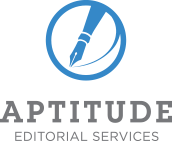Creating Reports That Get Results
An effective report is structured, written, and designed with a particular audience in mind. And, equally important, it has a specific purpose: its creators know exactly what they want that audience to do after reading it.
In creating any document, you should identify its likely readers—the audience. What do they already know about the subject? Are they experts familiar with the terminology and concepts, or do they need some background information? Are they mainly interested in the technical details of a project, or in how much it will cost? What kind of decision-making power do they have? Time spent on a careful audience analysis is always a good investment. Here are some resources that can help you get started:
Purdue Online Writing Lab: Audience Analysis Overview
David McMurrey: Audience Analysis: Just who are these guys?
Jean Weber, Technical Editors’ Eyrie: Audience and Document Analysis
Closely related to the audience is the purpose. Many reports are meant to persuade the reader to take action, whether it’s fighting climate change or choosing a new office coffeemaker. The desired actions emerge as you collect and analyze your data, and as you keep asking yourself “What is the problem, and what is its solution?” When your analysis is complete, you can express the audience and purpose in the following form: “This report is intended to persuade [the target audience] to act in the following ways: 1. … 2. … 3. …”
These actions are the report’s recommendations, perhaps named “calls to action” or “solutions.” The recommendations can become the backbone of the report’s outline. Key findings from the data are laid out to show a clear and logical path to each recommendation. The outline is fleshed out with the answers to other questions, keeping the audience in mind: What problems or challenges led to the study? How was data collected? What did the data reveal? What are the benefits and drawbacks of possible actions? What are the costs?
The report’s design should clearly reflect its structure. The recommendations should jump out at the readers, both in the executive summary and the body of the report. Keep the pages uncluttered; use figures and tables if they help the readers understand what you’re asking of them, but otherwise leave them out.


